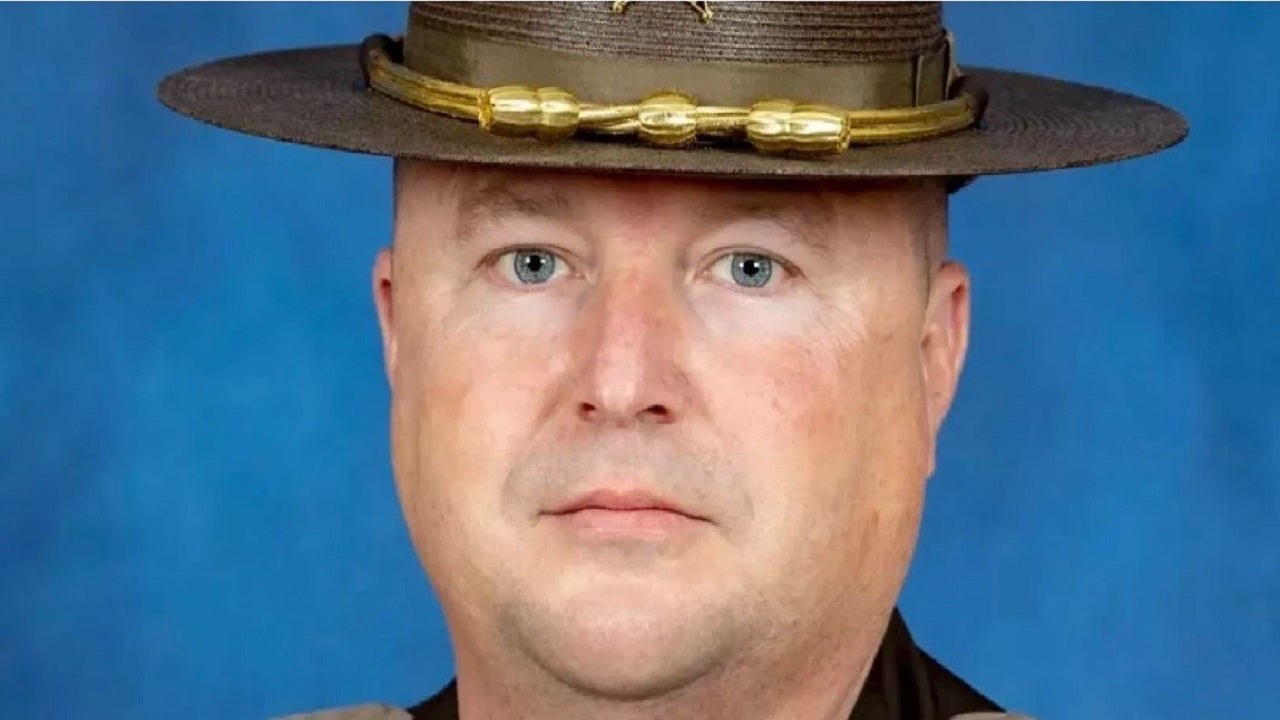Women and doctors are beginning to question whether stage zero breast cancer is really cancer at all.
The words were so terrifying, and came so fast and furiously that Donna Pinto remembers just shutting down.
It was 2010. She was 44 and sitting in a doctor's office, but her emotions and her intellect had fled the room as she heard a series of words.
Ductal carcinoma in-situ. Mastectomy. Partial mastectomy. Seven weeks of radiation. Stage zero breast cancer. Pre-cancer.
"I was numb and I was almost paralyzed," Pinto told InsideEdition.com.
"I was being told to do a lot of different things, see many different doctors, schedule an MRI, schedule a surgery.
"I just thought I was going to die."
Welcome to the chilling and confounding diagnosis of DCIS, aka stage zero breast cancer.
Ductal carcinoma in situ, in layman's terms, refers to abnormal cells trapped in the breast's milk ducts. They have not traveled beyond the tributaries that carry breast milk and there's no definitive research that shows they will.
As mammogram technology has grown, so has the number of DCIS diagnoses.
In the 1990s, only about 15,000 to 18,000 cases were annually diagnosed, according to medical experts. Now, that number is more than 60,000, or about 25 percent of breast cancer cases, according to the American Cancer Society.
Being able to see microscopic specks in a routine mammogram does not mean physicians and surgeons automatically know what those spots mean in terms of prognosis or treatment.
Nevertheless, the standard of care is aggressive — the same as treatment for invasive cancer:
A painful biopsy conducted while the patient is awake sucks tissue from inside the breast. If the flesh shows "abnormal cells," surgery is performed to remove those cells in a procedure called a lumpectomy. If the specks are seen throughout ducts in the breast, a mastectomy may be recommended. Seven weeks of daily radiation treatments may follow, and then five to 10 additional years of hormone therapy, just in case.
It’s a lot to take in, and physicians often want to start treatment right away.
"I’ll never forget it," Pinto said. "The alarm goes off like the house is on fire and you have to run out the door. It’s really scary stuff."
After four surgeries, being punched in the breast with a needle the size of her finger and enduring a mammogram with a wire stuck through her breast, Pinto said, "Enough!"
It was 2012. "That’s when I said I’m done. I’m completely done with this. And that’s when I started my website. I just thought, 'I’ve got to find other people out there who are feeling just like me — that this so absurd.'"
***
Studies show that up to 80 percent of women diagnosed with DCIS never develop invasive breast cancer — meaning the abnormal cells inside their ducts never go anywhere.
A growing number of doctors and surgeons now believe stage zero breast cancer is being over-treated, to the physical and emotional detriment of patients.
“We have a tendency, particularly in this country, to go overboard,” said breast cancer expert and researcher Dr. Susan Love.
Like Pinto, some women are terrified. Others panic. Some advised to have a mastectomy opt to have both breasts removed as insurance against developing cancer in the future.
“People will sometimes react with ‘Well, you know, if my breasts betray me, cut them off and then they won’t do that anymore,’” said Love.
But DCIS "is not cancer. It’s the step before cancer," she said. “It’s like saying you have high cholesterol, but that doesn’t mean you’re going to have a heart attack."
Love is on an advisory panel for the first national study of DCIS patients. The COMET (Comparison of Operative to Monitoring and Endocrine Therapy) survey will enroll 1,200 women with low-risk DCIS and place them in two groups.
One will receive the current standard of care, including lumpectomies, mastectomies and radiation therapy.
The other will use “active surveillance,” meaning the women will receive mammograms and physical exams every six months. Surgery will be recommended only when needed.
It’s hoped that the study will finally provide answers to life-changing questions about which DCIS patients need surgery and which ones don't.
The Dr. Susan Love Research Foundation, which Love leads, is also working to develop other treatments for stage zero breast cancer.
“Could we squirt something down the duct, like Drano, and clean it out and then that would take care of it?” she said.
She is also trying to better map breast tissue. Ducts are not visible, which is why surgical “markers” are inserted into a patient’s breast to show physicians where to remove tissue.
The inside of a woman’s breast looks like chicken fat, she said.
“You go in there and you blindly take out this tissue that has been marked, hoping you got it all,” Love said. “But you can’t see the duct so you don’t know whether you got that all out until they look (at the removed tissue) under the microscope.”
And then if the margins aren’t clean, a surgeon goes back in and takes out more tissue. Clean margins mean no cancer cells are seen in the outer edge where the cancer cells were removed.
For all of the unknowns about how and when DCIS morphs into invasive cancer, there are several hard truths, she says.
“If you get diagnosed with DCIS, there is no emergency. This is not going to turn into invasive cancer and spread all over in the next two weeks. You have time.
"Get a second opinion. Talk to other people. Breathe. Let the initial panic calm down and then make a decision that will feel right to you."
***
What felt right to Alison Mann was to have both her breasts removed, despite the fact that DCIS was only found in one.
“I just wanted to not have the worry of cancer coming back on the other side,” said the Los Angeles County mother of 2-year-old twins.
Her mother had also been diagnosed with DCIS and underwent the removal of one breast.
Mann was 34 when a mammogram showed white specks, like a dusting of salt, across one breast. “I looked at my mammogram on the wall. I could see the difference and I thought, 'Oh. I have cancer.'"
Her doctor advised a mastectomy, she said. And that’s when she decided to cut off both breasts.
“I didn’t want to worry about whether I’d live a long or short life,” said Mann, who is now 38. “They said it could speed up... I had my whole life ahead of me. It was mainly to not have to think about it."
And with reconstructive surgery, she said, “I could have good boobs for the rest of my life."
Things didn’t turn out that way. Mann had to undergo emergency surgery, she said, to deal with an implant that became infected and had to be removed.
Neither of her implants looks right to her, she said, but she can’t handle the thought of having more surgery.
She has no regrets over her choice to have both breasts removed, though she’s not sure whether she would do it again if she found herself in the same spot today.
"I don’t know what I’d do now," she said. "The person going through it has to dictate the treatment. If I delayed it and it all of a sudden changed, then I would have to go through chemo and radiation, after a double mastectomy."
***
Only about 3 percent of women diagnosed with DCIS die from breast cancer within 20 years, the same rate for all women, according to a JAMA oncology study.
That statistic is one of the more confusing numbers in an already baffling array of stage zero cancer data.
Why undergo painful biopsies, lumpectomies, mammograms with wires inserted in your breasts and then radiation therapy if your chances from dying from breast cancer are no greater than if you did nothing at all? It’s a question Pinto asked.
“I just thought, 'I can’t believe this is what women are going through and it may never be an invasive cancer. It may never cause any harm in a woman’s life,” said Pinto.
Her experience went like this:
“You get a mammogram. They see something they don’t like and they do another mammogram. Then they want to do a biopsy. Then they want to do surgery. Then they don’t like the margins. Then they want to do another surgery,” she said.
After all that, Pinto said, “You know, I’m never going back to them. I just thought this whole procedure was quite barbaric."
Pinto, now 52, drives from San Diego to Los Angeles for a high-quality, full ultrasound of her breasts once a year. The scan is a much better screening for women with dense breast tissue, she said.
She pays for the tests herself. Another troubling factor of stage zero cancer treatment is that insurance companies typically cover mammograms, Pinto said, but not newer, innovative tests like the one she now uses.
“There’s a big problem with our technology and the way we’re going about treating this. They can see things in a mammogram, but they don’t know what they’re seeing. They can see microscopic cancer cells, but they don’t know what that means.”
“I just said no more. I didn’t have invasive cancer. There’s no sign of anything. I think I can face whatever comes my way. We can’t predict the future."
She remains cancer-free. She eats healthy foods and routinely exercises. She is happy, and committed to helping other women like her.
“There comes a point when you just have to live your life and do the best you can.”
RELATED STORIES





